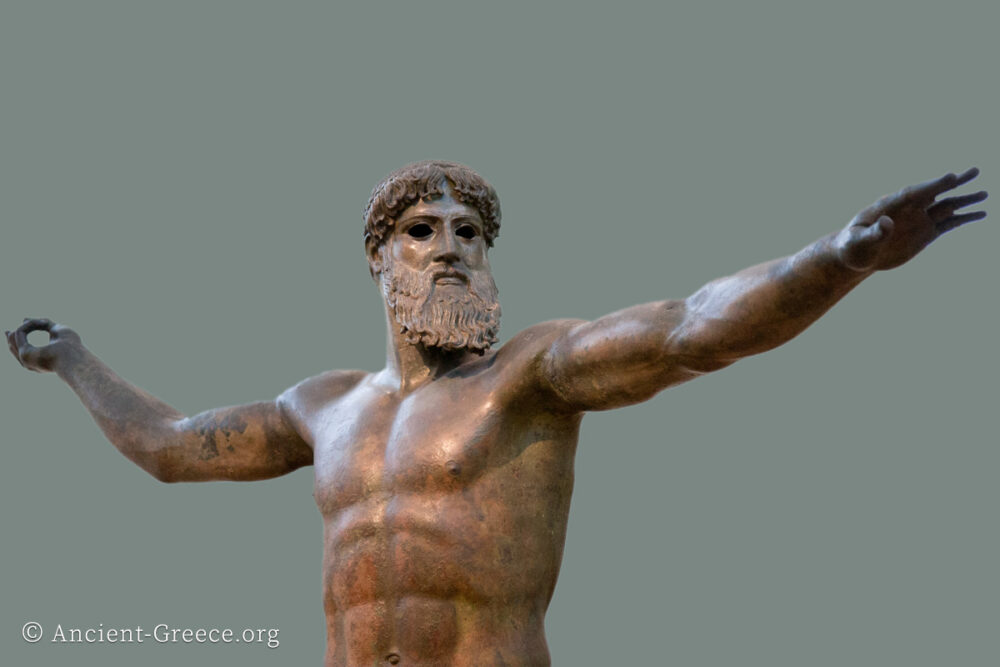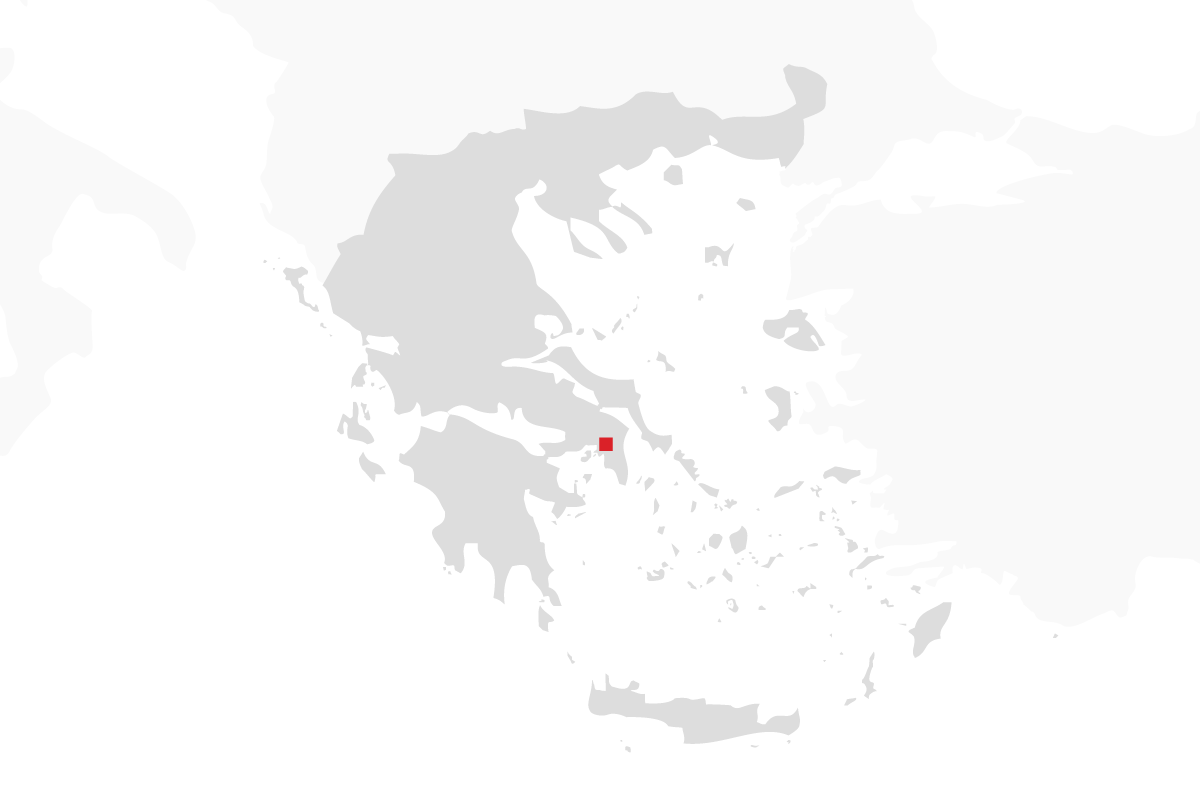
On this page:
The National Archaeological Museum of Athens is the largest museum of Greece and home to some of the most significant artifacts from the entire country. With the amount of art on display, it can be considered an art museum as well.
The exhibits are arranged mainly in chronological units, each covering a major period of ancient history from Neolithic times to the Roman Era.
In addition to the permanent collection, the museum presents periodic events and temporary thematic exhibitions.
The flow of the museum encourages visitors to venture on a time journey of Greek civilization through art, from the depths of Stone and Bronze ages, to the Greco-Roman era.
The Cycladic Art collection illuminates a culture that was exuberant and outgoing . Classical art glorifies “reason” and is highly idealistic despite its focus on naturalism.
The ideals of the Classical world of Greece find their logical conclusion in the highly expressive statues of the Hellenistic period, and reach their end in the realism and pragmatism of Roman art and architecture.
Centuries later in Italy, ancient art unearthed during early excavations and the discovery of ancient Greek texts spawned the Italian Renaissance (rebirth of ancient ideals and aesthetics). The ancient aesthetic ideas were emulated again in the 19th and 20th centuries with the Neoclassicism movement in art and architecture in Europe. The very building that houses the National Archaeological Museum is an example of Neoclassical architecture.
This page contains highlights from different eras. For more photos and information click on each topic’s heading.
4000 – 1100 BCE: Neolithic and Bronze Age Art
Top row:
- Dimini Vase. Late Neolithic Era, (5300 – 4800 BCE)
- Mycenaean funerary gold mask known as Mask of Agamemnon.
Found in Tomb V in Royal circle A at the Acropolis of Mycenae. Unearthed during excavations at Mycenae in 1876 by Heinrich Schliemann who believed it to belong to the Homeric hero Agamemnon. Later dating however placed the mask to 1580 – 1550 BCE, about three hundred years earlier than the time of Agamemnon. The name stuck though, and many refer to it still as the Mask of Agamemnon. The mask’s authenticity has been questioned several times, given the fact that many suspect Schliemann was capable of planting elaborate forgeries to generate attention and money for his projects - The Harp Player. The Harp Player was found in Keros and is dated circa 2400 – 2200 BCE. Cycladic statue. It is made of Parian marble and is 21 cm tall.
Second row, left to right:
- Cycladic figurine. 2800 – 2300 BCE.
- Mycenaean Bull Rython in the shape of a bull’s head.
This rython was found in Tomb IV at the Acropolis of Mycenae. It is made of silver with golden horns, nostrils, and flower on the forehead. Compare this with the Bull rython in the Archaeological Museum of Heraklion, Crete it is evident that the artist was influenced by Minoan art. 16th c. BCE, 31 cm tall. - Boxing Boys fresco. Circa 1550 – 1500 BCE.
Two boxing boys are depicted with boxing gloves and unique hair style in this fresco from room Beta. Akrotiri, Thera. - Golden artifacts from Mycenae. 1550 - 1500 BCE.
The golden funerary diadem from Tomb III is displayed top-center in the display.
More Stone and Bronze Age artifacts…
1100 – 480 BCE: Iron Age
Top row, left to right:
- Kore Phrasikleia. Circa 550 – 540 BCE.
Center, top to bottom:
- Dipylon Amphora is a large amphora from the Geometric Era.
It is decorated with a funerary scene among the rows of geometric patterns. In this scene, the deceased is laid flat among numerous mourners who hold their heads in sorrow. This was a common theme in Geometric Era pottery.
It is about five feet tall and it was found in Dipylon in Athens. 760 – 750 BCE. - Relief sculpture from a Kouros base found in Kerameikos.
The front of the base depicts this scene with four athletes. The athlete on the left is preparing for a jump, while the two figures in the center are engaged in wrestling. The figure on the right is holding a long stick or a javelin. Carved of Pentelic marble around 510 BCE.
Right:
- Kouros known as “Aristodikos”. Circa 510 – 500 BCE. Made of Parian marble and found in Mesogeia, Attica.
More Dark, and Archaic Age artifacts…
480 – 323 BCE: Classical Era
Top row, left to right:
- Zeus of Artemision bronze statue. c. 450 BCE.
Bronze statue of Zeus (or Poseidon) with arms extended as if in the process of throwing a thunderbolt (or trident) found at Cape Artemision. BCE. 2.09 heigh. - Youth of Antikythera. Bronze statue found underwater at Antikythera. Circa 340 - 330 BCE.
Second row:
- Statue of Aphrodite.
Parian marble. Found at Baiai in southern Italy. The neck, head and right arm were restored by the famous Italian sculptor A. Canova (1757-1822). This statue was made in the 2nd c. AD of the type of the Syracuse Aphrodite, the original of which goes back to the 4th c. BCE. - Marathon Boy.
Bronze statue of a youth studying an object. According to Kaltsas (242), the left hand was replaced at a later date with one in the shape of a lamp. Circa 340 - 330 BCE. - Funerary lekythos. 420 – 410 BCE.
Marble. Found in Athens, at Syntagma Square, the site of an important ancient cemetery. It depicts Hermes Psychopompos (leader of souls) escorting the young Myrrhine to Hades. - Diadoumenos.
Statue of a man binding his hair. Found in the house of the House of the Didadoumenos in Delos island in 1894. There are many ancient copies of “diadoumenos”. This copy was made about 100 BCE of a famous original made by Polykleitos in the third quarter of the 5th c. BCE. It is 1.95m tall.
This statue is a good example of the classical Greek pose of contrapposto where one leg bears the weight of the body while the other leg is in a resting position. This weight distribution forces one part of the pelvis to be more elevated, shaping the spine into an “S” curve shape in order to make the body balanced.
More Classical Era art and artifacts…
323 – 200 CE: Hellenistic, Greco-Roman, Roman Eras
Top row, left to right:
- Aphrodite, Pan, and Eros. Circa 100 BCE.
The Group of sculptures known as Aphrodite, Pan and Eros was found in a southern room of the “House of the Poseidoniastai of Beryttos” (Berut), in Delos island. It is 1.55 tall. - Portrait head from a statue of a philosopher. About 240 BCE.
Bronze. Found in the Antikythera shipwreck. The eyeballs are made of a different material and the irises of glass paste. This statue depicted a Cynic philosopher, probably Bion the Borysthenite. - Horse and Young Jockey, known as “Artemision Jockey” is a bronze statue of leaping horse and young jockey. Circa 140 BCE.
Retrieved in pieces from the Artemision shipwreck off Cape off the coast of Euboea. The young jockey of the galloping horse will have held the reins in his left hand and a whip in his right. The contractions and furrows on his face, especially on the forehead, reveal agony and passion. Large parts of the body and the tail have been restored.
Second row:
- Antikythera Mechanism bronze fragment.
Found on an ancient shipwreck off the coast of Antikythera island. Dated to 80 BCE (according to National Archaeological Museum signage next to it), or to the 2nd century BCE (according to wikipedia). The mechanism has 32 gear wheels and plaques bearing Greek inscriptions relating to the signs of the zodiac and the months. It is accepted that the machine is a calendrical computing machine: it determines the time on the basis of the movements of the sun and moon, the relationship between them (eclipses), and the movements of the other stars and planets known at that period.
The mechanism was probably made at the School of Poseidonios on Rhodes. Cicero, who visited the island in 79/78 BC, reports that a similar device was made by the Stoic philosopher Poseidonios of Apameia. The design of the Antikythera mechanism appears to follow the tradition of Archimedes’ planetarium devices, and to be connected with sundials. Its operation is based on the use of gear wheels. The differential gear assembly used to take the difference between two rotations is first found in the Antikythera mechanism, which is one of the most important achievements of ancient technology. - Hairnet with the relief bust of Artemis with quiver. Gold, garnets. 3rd c. BCE.
- Gold crown with flowers.
- Statue of the emperor Augustus (29 BC-CE 14).
Bronze. Found in Agios Efstratios in Euboea. 12-10 CE. - Mosaic floor of a house depicting the head of Medusa. 2nd c. BCE.
More Hellenistic and Roman Era artifacts…
More Artifacts and Information
- Stone and Bronze Ages 4000 – 1200 BCE
- Iron Age 1200 – 480 BCE
- Classical 480 – 323 BCE
- Hellenistic 323 BCE – 200 CE
Related Pages

































